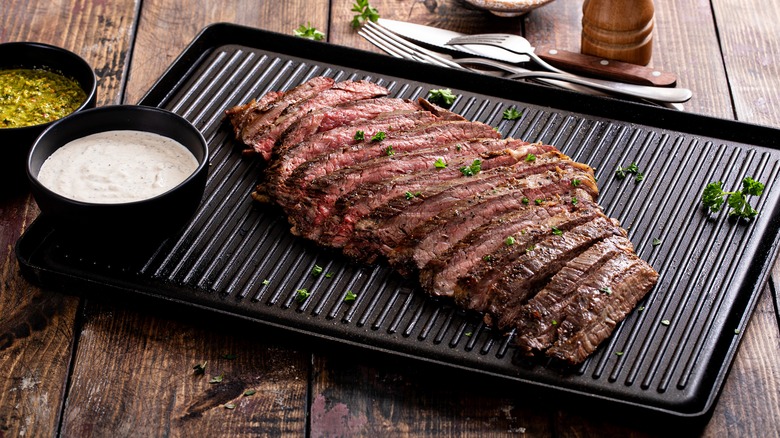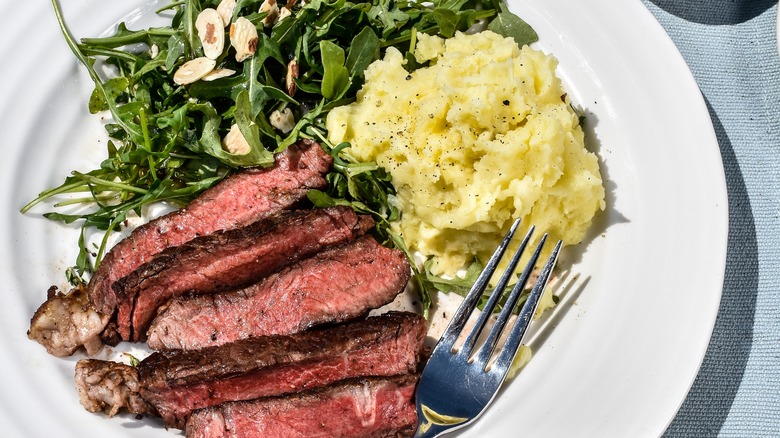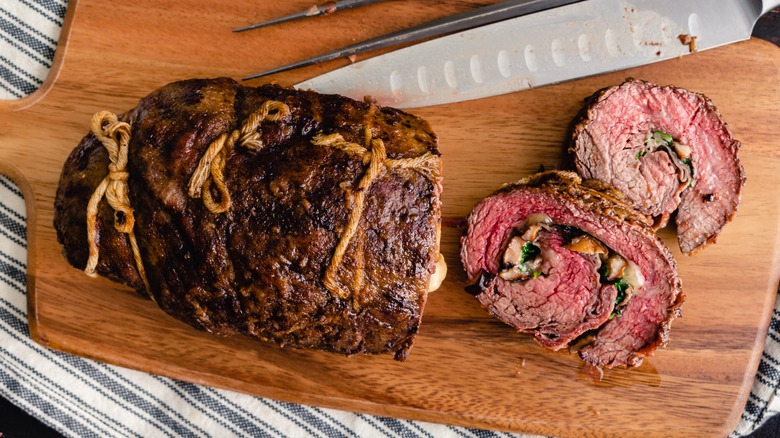The Key To Grilling Flank Steak Just Right
Flank steak may not be the first cut you think of when buying steaks to grill. If you're on a budget though, thin, flat cuts like flank steaks or skirt steaks are often cheaper than thick steaks like ribeye or New York strip, and they still taste great. Flank is the cut of choice for London broil and it's great in fajitas, but when served on its own, it's got a hearty, strong beefy flavor. You just need to be careful not to overcook it, or it'll become tough and unpleasantly chewy.
The key thing to remember is that flank steak is a thinner cut of meat, coming from the cow's abdominal muscles near the stomach. Different cuts of steak cook differently, and thin steaks are easier to overcook. This means you have to be a more vigilant griller than if you were grilling a thicker steak. For a flank cut, it helps to grill it for less time or at a lower temperature than you might normally (there are a few reasons for this, which we'll get into), and marinating helps to stop the steak from getting tough.
Don't overcook a thin steak
Thick steaks can easily be grilled at high heat for a long time without too much risk of overcooking, but not flank. Some grillers say the best way to prepare thin steaks is to cook them quickly over high heat. However, others insist that it's easier to accidentally dry them out this way, and you should instead grill it for longer at lower heats. If you choose high heats, the meat should only need three to five minutes on each side before it's fully cooked.
Another thing to keep in mind, which applies to all steaks — but especially thinner cuts — is heat carryover. When you turn off the heat, that doesn't mean the steak is finished cooking. Inside the steak is still a high amount of heat, and that inside is still cooking for several minutes after you remove it from the grill and let it rest. So if you're shooting for an ideal medium-rare temperature, and you find that cooking the flank at that temperature somehow overcooks it, try cooking it to five or ten degrees Fahrenheit less instead. Once it's resting, carryover heat will finish cooking it.
Other need-to-know flank tips
Now that the most important info is out of the way, what else should you think about when making a flank steak? Marinating the meat with lemon juice or vinegar will help keep it tender, as will seasoning it with salt before cooking. Also, even though flank is thin, it can come in unusual wedge shapes due to its location on the cow, and cooking it like this raises its chances of cooking unevenly. You can prevent that by cutting the flank apart into more even pieces before you grill them.
When slicing flank steaks, you want to cut against the grain, which refers to the muscle fibers in the steak: Cutting "against the grain" means slicing the fibers into short pieces instead of cutting in a way where they're served long and tough to chew. With a thin cut like flank, your goal is to make the steak as tender and easy to chew as you can, because of all the above factors working against you. All these little things add up into a forkful of meat that still melts in your mouth.


